
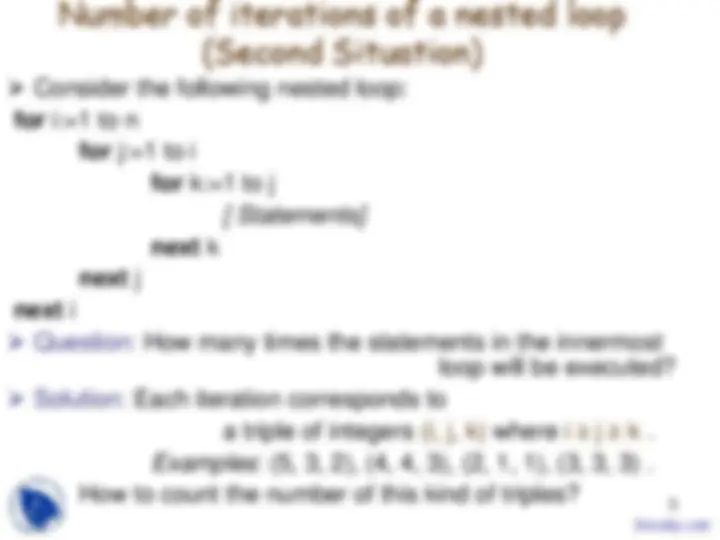
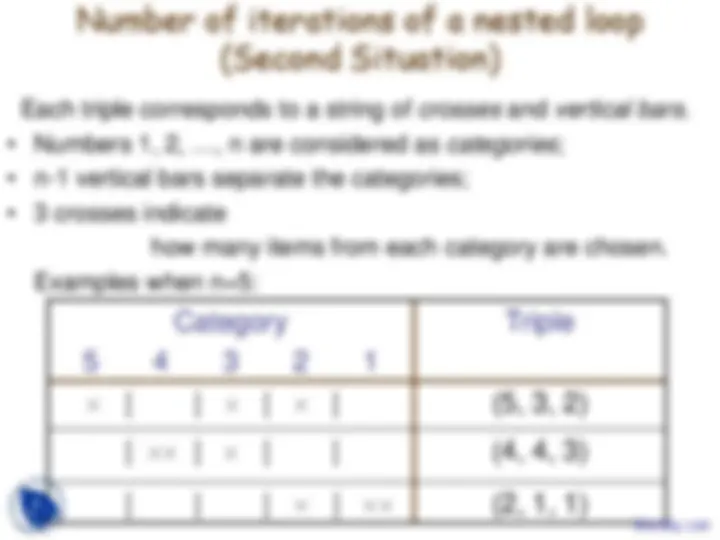
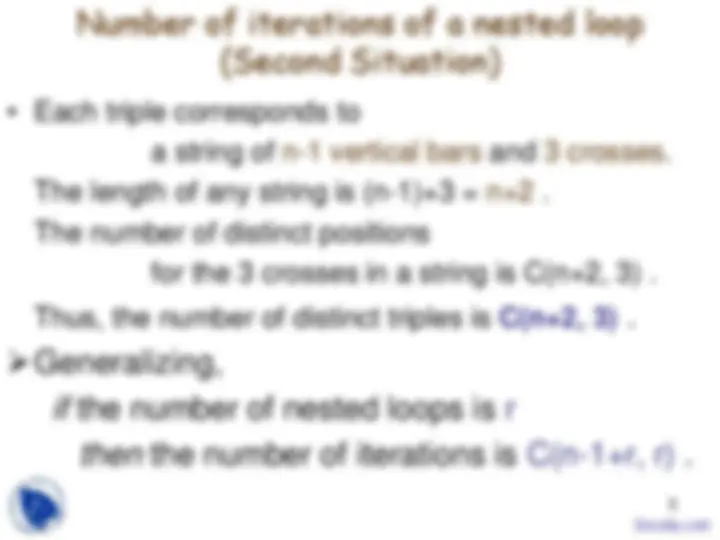
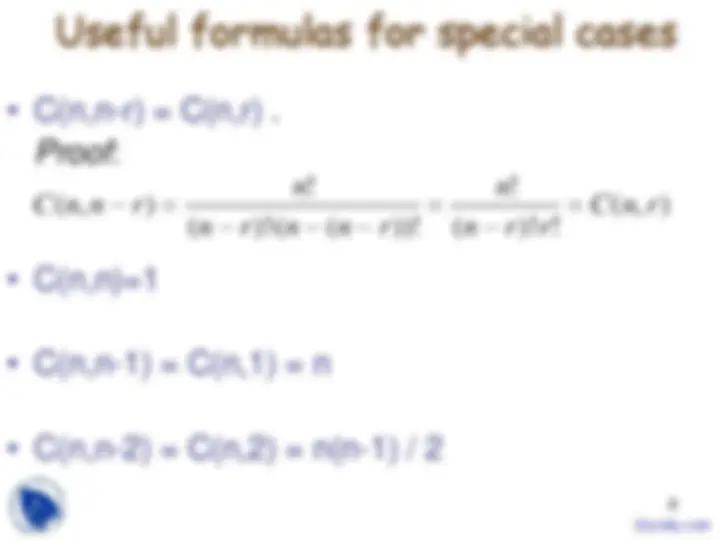
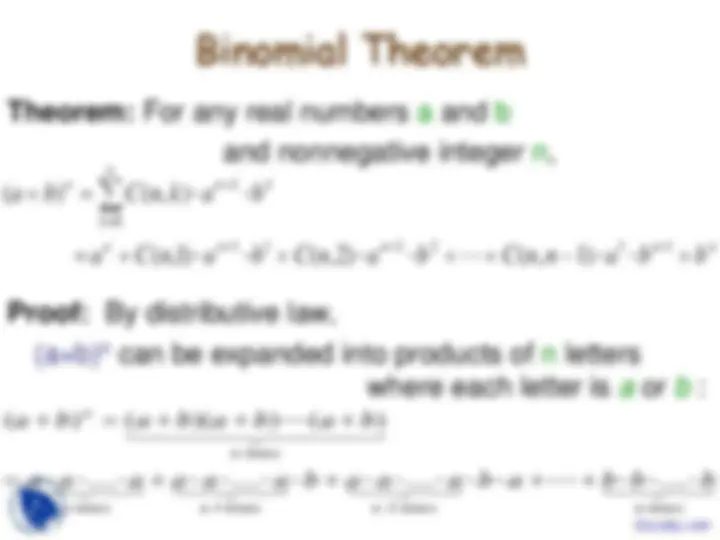
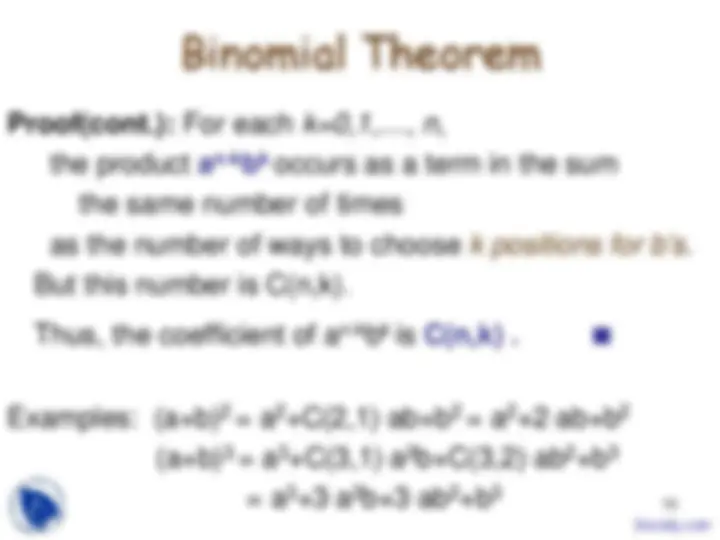


Study with the several resources on Docsity

Earn points by helping other students or get them with a premium plan


Prepare for your exams
Study with the several resources on Docsity

Earn points to download
Earn points by helping other students or get them with a premium plan
Community
Ask the community for help and clear up your study doubts
Discover the best universities in your country according to Docsity users
Free resources
Download our free guides on studying techniques, anxiety management strategies, and thesis advice from Docsity tutors
Solutions to counting the number of iterations in nested loops with different conditions and introduces the concept of r-combinations with repetition allowed. It also includes formulas for calculating the number of combinations and the binomial theorem.
Typology: Slides
1 / 12

This page cannot be seen from the preview
Don't miss anything!







1
2
Consider the following nested loop:
for i:=1 to n
for j:=1 to i-
for k:=1 to j-
[ Statements]
next k
next j
next i
Question: How many times the statements in the innermost
loop will be executed?
Solution: Each iteration corresponds to
a triple of integers (i, j, k) where i > j > k.
The set of all this kind of triples corresponds to
all 3 -combinations of {1, …, n}.
Thus, the total number of iterations is C(n,3).
Each triple corresponds to a string of crosses and vertical bars.
how many items from each category are chosen.
Examples when n=5:
5
Which formula to use?
Order matters Order does not
matter
Repetition allowed
Repetition not
allowed
r
8
Useful formulas for special cases
10
Binomial Theorem
n-k
k
n-k
k is C(n,k). ■
2
2
2
2
2
3
3
2
2
3
3
2
2
3
11
Using the Binomial Theorem
4,
4,
4,
4000
3999